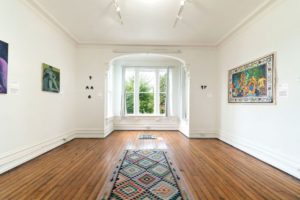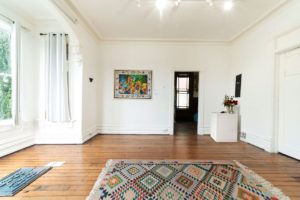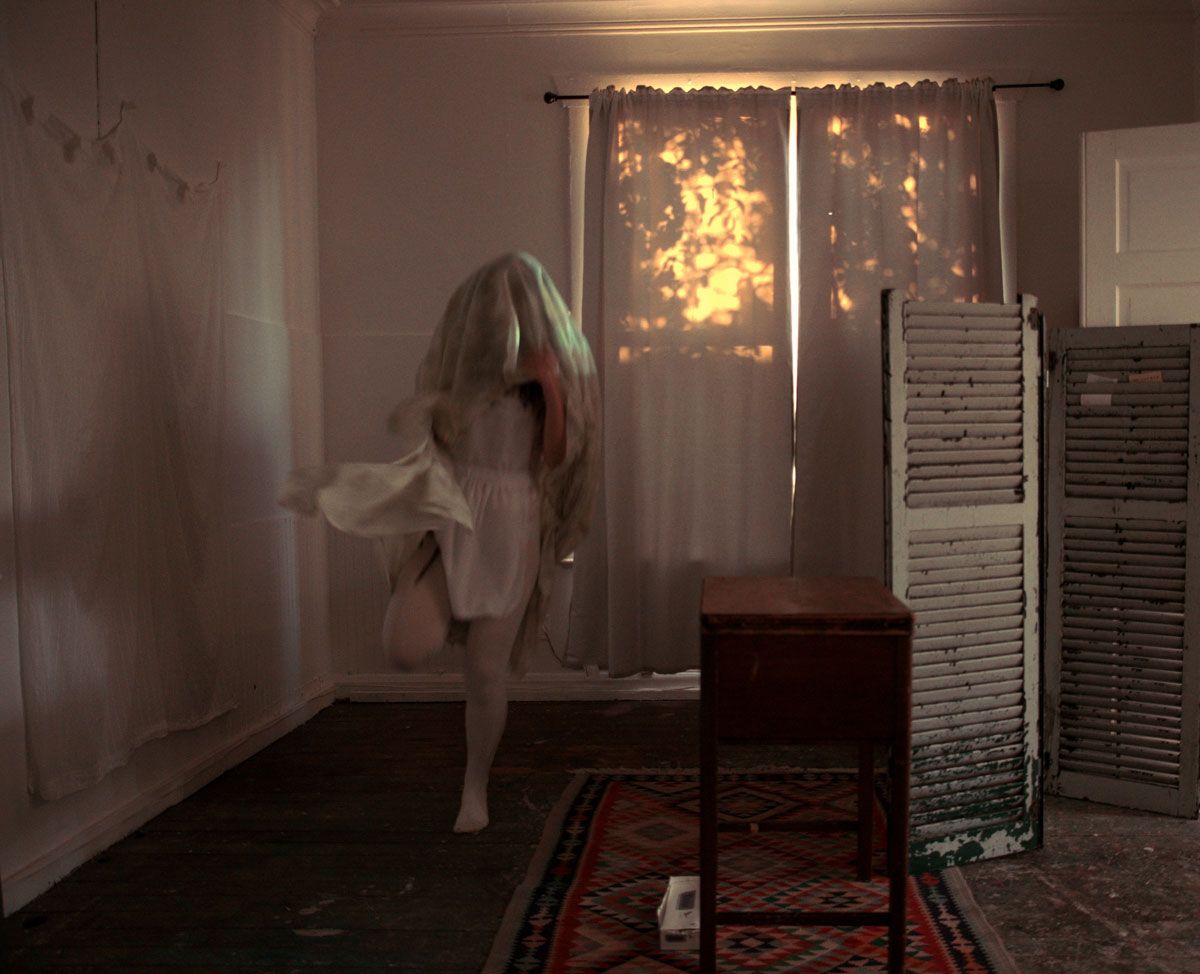Through the front yard and up the deck stairs of a quaint Victorian era house is the entryway of inconspicuous James Black Gallery where “Arezoo | Intimacy and Iran,” curated by Sev Shabankareh, exhibited for a weekend in September. Taken from Farsi, “Arezoo” refers to a wish or desire and the show featured an all Iranian line-up of artists who were invited to explore the title’s various dimensions through the Iranian experience — especially subjects which are limited to hushed whispers and private confessions.
A combination of sociocultural, religious and political factors make it really difficult to talk about specific experiences and identities (such as for queer individuals, or for femmes who do not abide by the requirements to be docile and obedient) because those factors act also as agents for policing and reprehension. Conversations refer to a limited, but established, list of what is acceptable to talk about and are presented in sanitized and palatable chunks. Anything that falls outside of this scope is essentially dismissed — there is a lot that has been made taboo in Iranian communities. Case in point: I am pretty apprehensive of having my full name associated with this piece on the off-chance that a family member decides to Google my name (for some fucking reason) and finds an article where I am discussing topics that have been deemed unsavory. Despite being a native speaker, I don’t really feel that I have the vocabulary to speak about intimacy or desire in Farsi because they have never been a part of my familial environment, and so the context for me to navigate those inner feelings has been, and continues to be, out of reach. “Arezoo” attempts to create an environment for us to bear witness to the experiences of desire, sensuality, and sexuality that have been shut out from representation, and to re-envision these feelings without a foundation of guilt or judgement.

On the wall closest to the entryway and the most vibrant of the pieces, Darius Kian’s “Bathers” depicts a scenery of queer affection, pleasure and care in a bathhouse. Nestled within a border and fringe, the painting is presented like traditional Iranian carpet weaving, echoing the historical “social and sexual functions” of bathhouses alongside their more practical function. Relationships between individuals of the same ‘sex’ is a crime punishable by death under the theocracy and an air of social stigma and scorn still lingers towards LGBTQ+ people in Iranian society — both domestically and in the diaspora. The nude body is also often seen through objectifying eyes that consider sexual desire to be an implication of impurity and lacking modesty, even when presented under the more socially acceptable context of heteronormative relationships. “Bathers” reintroduces gentleness and sensuality into the picture and offers a glimpse into a community crafted through care rather than fear. The communal experience depicted in the piece contrasts the isolation that many queer individuals in Iran face as a result of hostile social norms and government policies that directly disrupt processes of self discovery and acceptance, to show that joy is still possible in survival.
On the opposite wall, Kian’s second piece “Gonah Dareh” and Shahin Sharafaldin’s “The Love Seat” hang side by side, both in pretty muted colors but each illustrating a different reality between two lovers. While “The Love Seat” illustrates a moment of mutual eroticism the pair in “Gonah Dareh” share a heavier moment after. Communicated in Kian’s artist statement, Gonah Dareh is a common saying “directly translating to “[this] has sin” or “it is a sin,” though the phrase is a condemnation, it has a strange duality as a request for mercy.” The duplicity is reflected in the physicality of the partners; the body in the foreground hunched over and racked with shame with what has transpired, and the mirthless pity of their spectating lover in the background. The sentimental divergence between the two artists’ pieces, and even within Kian’s represented works, touches on the essence of the show. There is no place for us to share our experiences of desire that exists outside of the guilt and shame we are taught to hold in place of the happiness and fulfillment they are meant to bring.
In the corner beside the two paintings, a screen is set up for Sepideh Yadegar’s short film “Asal,” where a story unfolds of the displacement faced by a dancer who has left Iran in order to practice her craft through interlaced shots of her in a new country of residence, and of her mother in Iran. The narrator speaks in Farsi, wondering why she keeps coming back to thoughts of Iran and a longing for her home when she has chosen this path for the freedom it offers. “Asal” resonated with me because it illustrates an experience that is familiar. Struggling to make peace between your own personal ambitions, or desires, and the expectations (really, the limitations) placed upon you. Sometimes the only option left for self-actualization is a departure from the only home you have ever known.

Reyhan Yazdani’s ceramic “Numbers,” hanging on either side of the large window looking out at the front yard, evoke the imagery of street numbers on the outside of buildings and residences in Iran. In between them is Yazdani’s bedroom rug, replicated and assembled from blue tiles and old, personal memories.
The performance piece by Sahba Sadeghian and Shima Raeesi, “Adat,” sees the duo paralleling each other in their performance of childhood play they had found similar between their younger selves. Having attended later on the opening day, I was able to catch the second run of the supplementary live performance — though only Sadeghian was present for this. The recording flits between separate shots of the two dressed alternatingly in black and white as they reenact these shared customs in their own ways through movements that feel ritualistic yet natural in their familiarity; tying and re-tying a belt around the body, slowly applying cuttings of tape to cover the eyes and mouths, painting on animal markings. The magic of childsplay and the comfort of their own habitual practices develops the intimacy perceived between the two artists. They are mirrors unto each other, their commonality actually reflecting the closeness experienced within themselves.
The intimacy carried through the pieces by the individual artists is that of a desire to connect — to connect through an identity and culture that is so familiar, yet feels so distant and unidentifiable at times. To connect through feelings that are so familiar yet alienating. The connection is at a place where our personal realities, that may make us feel so othered or displaced, can be recognized as still being human and worthy. It is a place where the individual and the collective merge to rebuild ideas about ourselves and what we want without the interference of arbitrary moral systems that reject and condemn some and favor others; to wish for a reality devoid of suffering, judgement and pain.


